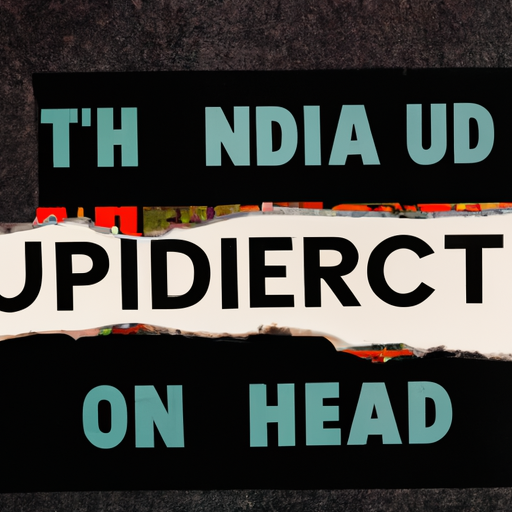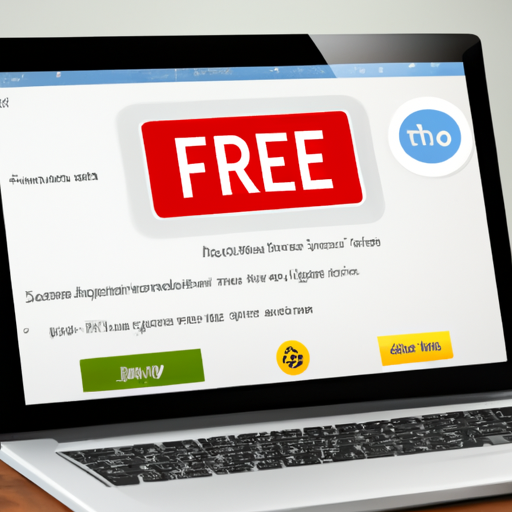AI Content Creation
The Pros And Cons Of Using Ai As A Marketer – Your Earnings Will Skyrocket With Ai At Your Side

As someone in marketing, you’re always searching for fresh tools and techniques to boost your income. Artificial intelligence (AI) has emerged as a key tool gaining traction in the marketing field in recent years.
AI can provide marketers with valuable insights into consumer behaviour and trends, allowing them to make more informed decisions about their campaigns. But what are the pros and cons of using AI as a marketer?
In this article, we will explore the potential benefits and drawbacks of using AI as part of your marketing strategy. We’ll look at how it can boost your profits while keeping costs low, as well as any challenges you might face when incorporating AI into your business model.
By exploring these topics, you’ll have all the information you need to decide whether or not AI could be right for you – so let’s get started!
What Is Ai?
I’m sure you’ve heard about AI, but what is it really?
AI stands for Artificial Intelligence and can be defined as the ability of a computer program or machine to think and learn. It has been around since the 1950s, but recently its capabilities have grown exponentially due to advances in technology.
AI applications are used today across many different industries – from healthcare to finance – and now marketing.
In marketing specifically, AI can help marketers save time on tedious tasks while providing insights that may not have been generated by humans alone. For example, AI can provide data-driven recommendations on how best to optimize campaigns and increase ROI. Additionally, AI can detect patterns in consumer behavior that could lead to more targeted messaging strategies.
By leveraging these capabilities of AI, marketers stand to gain a greater understanding of their consumers which will allow them to deliver more personalized experiences that are tailored to their customers’ needs. This increased level of personalization will enable marketers to better understand customer sentiment and drive higher levels of engagement with their brand.
How Can Ai Improve Your Marketing?
As a marketer, using AI in your strategy can be incredibly beneficial. With access to data-driven insights and smarter targeting strategies, you will be able to maximize the return on investment of your campaigns while taking less time doing it.
AI allows marketers to analyze trends more quickly and accurately than ever before, helping them make decisions based on real-time data rather than hunches or guesswork. By leveraging AI technology, marketers can also automate mundane tasks such as tracking customer interactions or segmenting audiences for targeted messaging. This frees up resources so that you are able to focus on higher value activities like creating content or strategizing around new product launches.
Additionally, AI tools help companies better understand their customers by analyzing large amounts of user-generated data. This enables organizations to create personalized experiences tailored specifically to each individual’s needs and preferences.
As a result, businesses are able to optimize their marketing efforts with greater accuracy and efficiency than traditional methods would allow.
What Are The Benefits Of Using Ai In Marketing?
Using AI in marketing has a lot of potential benefits. It can help marketers analyze data more effectively, streamline processes and automate tedious tasks, allowing them to focus on the most important aspects of their job.
AI-powered analytics are also incredibly useful for understanding customer behavior patterns and trends that might otherwise go unnoticed by tracking large amounts of data over long periods of time. This makes it easier to develop highly targeted campaigns tailored to individual customers’ needs, which can lead to increased conversions and sales.
Additionally, AI can be used to automate social media monitoring and respond quickly to customer inquiries or complaints, so companies don’t miss out on valuable opportunities for engagement.
Overall, using AI in marketing is an excellent way for businesses to stay competitive in today’s digital landscape while optimizing operations and reducing overhead costs. By leveraging these powerful tools, marketers have the opportunity to make data-driven decisions that maximize ROI and create lasting relationships with their audience.
What Are The Drawbacks Of Ai In Marketing?
As a marketer, you may have heard about the potential for Artificial Intelligence (AI) to revolutionize your trade. But with technology comes risks and drawbacks that must be weighed when considering whether using AI is right for you.
Imagine what it would be like if every customer interaction was perfect – no more mistakes or misunderstandings in communication, and no need to guess at which products they’d want to buy next. That vision of marketing success can become reality if you use AI as part of your overall strategy. However, there are also some downsides to consider:
-
Data privacy concerns: AI requires large amounts of data, which can lead to customers feeling their information isn’t secure.
-
Costly implementation: Setting up an AI-based system incurs costs such as technical resources, infrastructure and training staff on how to use it properly.
-
Algorithmic bias: If certain values aren’t programmed into the system from the start, then outcomes could be biased due to lack of diversity in programming teams.
-
Limited control over decision making: With automated decisions based on algorithms rather than humans, marketers risk losing control over key choices regarding product recommendations and communications strategies.
The benefits of using AI in marketing clearly outweigh these drawbacks but only if used correctly. To get the most out of this powerful tool, businesses must understand its limitations and plan accordingly so those advantages remain long term.
Now let’s look at what the cost implications might be when implementing AI…
What Are The Costs Of Implementing Ai?
Using AI as a marketer can have tremendous benefits, but there are costs to consider. Implementing AI requires time and money upfront, both in terms of research and development and the actual execution.
Scalability is key when it comes to using AI for marketing campaigns – you need to be able to easily scale up or down depending on your needs while still meeting regulatory requirements such as GDPR. This means that any automation processes must also take into account industry regulations so as not to put your business at risk.
The cost associated with implementing AI-driven marketing strategies depends largely upon how much data you’re working with, the complexity of the algorithms being used, and the level of expertise required to manage them. It might seem expensive initially, but this cost should be weighed against potential long-term savings in terms of increased efficiency, improved customer experience, lower overhead costs and higher ROI performance.
These expenses aside, AI presents an immense opportunity for marketers looking to make their job easier while simultaneously expanding their reach and improving their results. By leveraging existing technology and automating certain activities like lead generation or content curation, marketers can free up more valuable time to focus on driving greater value from their campaigns – whether through personalization efforts or better understanding customer preferences and behaviors.
With these insights in hand, they can then confidently move forward towards achieving their desired goals faster than ever before.
How Can Ai Help You Streamline Your Processes?
Moving on from the costs of implementing AI, let’s look at how it can help you streamline your processes. With automation strategies and data driven decisions, AI is an invaluable tool for marketers to increase efficiency and improve their campaigns.
Here are a few advantages of using AI as a marketer:
-
Automation: A significant benefit of AI is its ability to automate mundane tasks like responding to customer queries or scheduling emails. This allows marketing teams to focus on more important activities such as creating content or analyzing data.
-
Improved Decision Making: AI algorithms can analyze large amounts of data much faster than humans, so you’ll be able to make better informed decisions in less time with AI’s assistance.
-
Increased Personalization: By leveraging machine learning technology, AI assists marketers in providing customers with personalized experiences that are tailored specifically for them. This helps build stronger relationships with customers which leads higher conversion rates and increased sales.
These benefits all point towards one main advantage – improved productivity. When used correctly, AI can save valuable time and resources while helping you reach your goals faster than ever before!
Now that we’ve discussed the potential rewards, it’s also important to consider what risks come along with utilizing artificial intelligence in marketing.
What Are The Security Risks Of Ai?
AI is like a double-edged sword; it can be used to skyrocket your earnings, but you must also consider the risks. As marketers start integrating AI into their strategies, they should keep in mind its potential security threats and how these could affect their bottom line.
| A | B |
|---|---|
| AI ethics | AI trustworthiness |
| Data privacy concerns | Unstable algorithms |
| Bias detection issues | Security vulnerabilities |
The first concern with using AI as a marketer is ethical considerations – understanding what is ethically right for customers and protecting them from any possible harm that might arise from the use of AI technology. At the same time, marketers need to ensure that users have faith in their product by building trustworthiness through transparency about data usage and unbiased decision making.
Another issue to look out for when using AI as a marketer is data privacy concerns. It’s critical to take control over customer information and make sure it remains secure throughout all stages of the marketing process. Additionally, marketers must assess whether their algorithms are stable enough not to cause unexpected damages or results due to sudden changes in behavior or output predictions. Finally, detecting bias within algorithms is another important step marketers need to take before implementing AI solutions since even small biases can lead to big problems down the road. In addition, inadequate security measures may expose sensitive user information that could result in serious financial losses or reputational damage.
By taking into account both pros and cons associated with using AI as a marketer, businesses can confidently move forward towards achieving success without sacrificing safety precautions along the way. From ensuring ethical practices are upheld to being aware of potential security threats lurking around every corner, staying vigilant about risk management will help protect your business from costly mistakes so you can focus on growing your brand at scale. Is AI suitable for every business? Let’s explore this further…
Is Ai Suitable For Every Business?
AI is an incredibly powerful tool for marketers, but it’s not suitable for every business. To determine if AI is right for your organization, consider these three points:
1) Data Analysis – to use AI successfully in marketing, you need comprehensive data on which to base decisions and recommendations. If you don’t have access to the necessary data sets or lack the expertise to analyze them, then using AI-based solutions may be impractical.
2) Branding Strategies – different businesses require different types of marketing strategies. A one-size-fits-all approach won’t work when it comes to branding; therefore, a tailored solution that fits with existing brand values must be identified before introducing AI into your mix.
3) Cost Considerations – while there are many benefits associated with incorporating AI into your campaigns, there can also be significant costs involved as well. You should carefully weigh both the monetary and opportunity costs against potential gains before investing in any new technology.
In short, taking all factors into consideration can help you decide whether or not AI is right for your business needs.
As we move forward, it will become increasingly important to understand how best to leverage this technology so that everyone has equal access to its immense capabilities. With this knowledge at hand, we now turn our attention towards what ethical considerations come along with using AI?
What Are The Ethical Considerations Of Using Ai?
Now that we’ve discussed the potential of AI as a marketer and its general suitability for businesses, it’s time to look at some of the ethical considerations.
We must consider whether there are privacy issues or data protection risks when using AI in marketing strategies.
The main concern with utilizing AI is that companies often lack accountability on how they use customer data.
As mentioned before, AI relies heavily on collecting data from customers, which can be used for targeted ads and personalized content.
Companies should ensure that all collected data remains secure and private; otherwise, this could lead to serious legal implications down the line.
Furthermore, when creating algorithms to target specific demographics, it’s important to make sure they don’t discriminate against certain races or genders by accident.
This means marketers need to analyze their data regularly to identify any potential biases.
AI has tremendous potential as a marketer—but only if proper precautions are taken into consideration first.
It’s essential for companies to implement rigorous controls over how customer data is handled and stored so consumers feel safe entrusting them with their information.
The next step then is to explore what kind of legal implications arise from using AI in marketing campaigns?
Are There Any Legal Implications Of Using Ai?
The use of AI as a marketer is no doubt revolutionary. It has the potential to skyrocket your earnings and provide you with unparalleled opportunities that were never before possible. But, alongside its incredible benefits come legal implications that are worth considering.
For starters, when it comes to data privacy, there is always the danger of breaching user information if proper security measures aren’t taken into account while collecting and storing customer data. This could severely damage consumer trust in a brand or business, something every good marketer should try to avoid at all costs.
Moreover, AI-based marketing may also be subject to certain regulations set by governments depending on where your company operates.
Though these issues can seem daunting, they don’t have to be intimidating for marketers using AI technology properly. Taking proactive steps such as conducting an audit of existing systems related to data protection and compliance with relevant laws will go a long way in protecting brands from any liability issues down the road:
-
Data Privacy
-
Ensure that personal data collected is done so with explicit consent from customers
-
Put protocols in place around how third parties access customer data
-
Regularly update system security settings
-
Consumer Trust
-
Clearly explain why customer data needs to be collected
-
Provide transparency about what happens to this data after collection
-
Give customers control over their own information
When used ethically and responsibly, AI holds tremendous potential for marketers looking to improve their performance. By taking necessary precautions when utilizing AI technology, marketers can ensure their success without running afoul of the law.
Frequently Asked Questions
How Can I Get Started With Ai Marketing?
If you’re looking to get started with AI marketing, there are a few key things to consider.
Cost benefit is important: although investing in the right technology can be expensive, it will likely pay off in terms of improved ROI and audience targeting accuracy.
You’ll also want to make sure that your team has enough resources and technical understanding to implement an AI-powered strategy correctly.
If all else fails, don’t hesitate to reach out for expert advice—an AI & marketing consultant can help you find the best solutions for your needs!
How Can I Measure The Success Of My Ai Campaigns?
As a marketer, you can measure the success of your AI campaigns by using data-driven analysis and cost benefit analysis.
Impact assessments help to determine if there is any risk associated with the campaign and whether or not it will be successful in achieving its goals.
Risk assessment should also enter into the equation when evaluating an AI campaign’s performance; this helps marketers identify potential issues that could arise during implementation.
Overall, these tools enable you to accurately measure how effective an AI campaign was so that you can make informed decisions moving forward.
Are There Any Industry-Specific Benefits To Using Ai?
When it comes to AI and industry-specific benefits, the sky’s truly the limit!
From data-driven insights that can help you craft more effective customer analytics strategies to segmentation techniques and targeted campaigns, AI helps marketers take their game up a notch.
As an added bonus, with AI on your side, you’ll be able to save loads of time while seeing results like never before – it’s almost as if you have a supercharged assistant at your disposal!
What Are The Different Types Of Ai Solutions Available?
When it comes to AI solutions, there are a variety of options available for marketers.
Social media automation and data mining are two popular choices that help streamline the process of marketing tasks like scheduling posts, analyzing customer sentiment and more.
These tools allow you to collect valuable insights from your customers which can be used to make informed decisions about future campaigns.
With the right AI solution in place, you can maximize ROI while increasing efficiency and productivity.
Are There Any Alternatives To Ai-Based Marketing?
When it comes to alternative solutions for marketing without AI, data-driven strategies are a great cost-effective and time-saving choice.
As marketers, it’s important to consider all the options available when you’re looking to get the most from your efforts.
Utilizing existing customer data is one way to focus on creating more targeted content that will help drive conversions.
You can also use predictive analytics and automation tools that don’t rely solely on AI technology but still provide similar benefits.
In addition, leveraging influencers or conducting surveys can be highly effective in gaining insights into customers’ preferences and needs.
Conclusion
AI-based marketing is here to stay, and it’s up to smart marketers like yourself to make the most of its potential. With the right AI solutions in place, you can skyrocket your earnings and reach new heights of success with minimal effort.
When it comes down to it, AI will give you a leg up–it’s an invaluable tool for staying ahead of the competition and delivering results that are second to none.
So what are you waiting for? Get on board now! Embrace AI as part of your strategy and reap the rewards – after all, there’s no time like the present to get started and see where this futuristic technology can take you.
Just remember: while AI may seem daunting at first glance, don’t let its complexity keep you from taking advantage of these incredible opportunities – they could be just the thing your business needs to break through into uncharted territory.
Marc’s expertise lies in integrating technology and advertising, focusing on AI content creation, data analytics, and digital marketing trends. His insightful articles demystify complex topics and provide actionable insights for advertisers and marketers looking to leverage technology in their campaigns.
Through his writing, Marc sheds light on the potential of AI and automation in creating and distributing compelling content. He explores how machine learning algorithms can optimize targeting, personalization, and user experiences, helping advertisers deliver more relevant and impactful campaigns.
Additionally, Marc dives into the realm of data analytics, revealing the power of data-driven decision-making in advertising. He explores the methodologies, tools, and best practices that enable advertisers to harness the vast amount of data available and gain valuable insights into consumer behavior and campaign performance.
AI Content Creation
ZimmWriter Review and Discount Code (2023)

Introduction
Are you finding yourself dedicating an excessive amount of time to writing content? Believe me, I’ve been in that situation before – staring at a blank screen and struggling to find the right words. Through my research, I discovered an AI-powered tool called ZimmWriter that guarantees the creation of high-quality written content.

This post will shed some light on ZimmWriter’s features, pros/cons, pricing and how it can streamline your writing process.
I have been using ZimmWriter for several months now. I use a MAC as my main machine and run ZimmWriter on low-energy Windows Machines. Curious enough? Let’s dive in!
Key Takeaways
- ZimmWriter is an AI-powered content writing tool that utilizes the GPT model to generate high-quality written content for various purposes such as blogs, product descriptions, and social media posts.
- ZimmWriter stands out with its user-friendly interface, seamless integration with WordPress (optional Plugin), and wide range of features that enable efficient content generation without compromising speed or accuracy.
- The pricing options for ZimmWriter are affordable, starting at a one-time price tag of $197 or a monthly subscription for just $10. They also offer an attractive lifetime deal option for cost-conscious users.
- With ZimmWriter, users can streamline their content creation process and save time and effort by leveraging its AI-powered capabilities to generate high-quality content tailored to their specific needs quickly. Its customizable features allow users to create engaging content that captures their desired style and stands out.
Overview of ZimmWriter
ZimmWriter is an AI-powered content writing tool that utilizes the GPT model to generate high-quality written content for various purposes such as creating engaging blogs, product descriptions, and social media posts.

Features and Functionality
ZimmWriter truly stands out due to its diverse range of features and functionality.
- User-friendly Interface: ZimmWriter is known for its easy-to-use interface, enabling quick and convenient blog content creation.
- Integration with Google Docs: It seamlessly integrates with Google Docs, providing a hassle-free experience for accessing and working on various pieces of content.
- AI Content Writer: This tool is designed as an AI content writer that retrieves words from OpenAI on the basis of user input, ensuring optimized results.
- Wide Feature Set: ZimmWriter brings a host of features to the table, empowering users to generate high-quality, long-form written content efficiently.
- Speed and Accuracy: Despite being feature-rich, this platform does not compromise either on speed or accuracy in content generation.
- Lifetime Deal Option: To cater to cost-conscious users, ZimmWriter backs an attractive lifetime deal option that makes it highly cost-effective.
- Positive Reviews: Loved by its users worldwide, ZimmWriter enjoys a healthy stream of positive reviews and testimonials endorsing its remarkable offerings and capabilities.
Key Features
- AI-powered writing – ZimmWriter uses advanced AI to generate human-like content on any topic with just a few prompts.
- Customizable output – You can customize the tone, style, keywords, synonyms, and more to get articles tailored to your needs.
- Markdown support – ZimmWriter outputs content in markdown format so you can easily publish blogs, articles, etc.
- Bulk content creation – It can generate multiple long-form articles (2000+ words) at once.
- SEO optimization – The content is optimized for SEO with headings, meta descriptions, keywords, etc.
- Plagiarism-free – The generated text is completely unique and passes plagiarism checks.
Benefits
- Save time – ZimmWriter can draft an entire blog post in seconds versus hours of manual writing.
- Increase productivity – You can create 10X more content without burnout.
- Improve quality – The AI generates well-researched and coherent content.
- Lower costs – No need to outsource writing with an in-house AI writer.
- Scale content – Easily create content for multiple sites, topics, and formats.
How to Use ZimmWriter
Using ZimmWriter is simple:
- Sign up for an account at zimmwriter.com
- Enter your writing prompts and parameters
- Generate content in markdown format
- Download and publish the articles
You can further customize the output by adding keywords, changing the tone, adjusting length, and more under the advanced settings.
Pricing and availability
Stepping into the realm of ZimmWriter, let’s discuss its pricing and availability. The tool is quite affordable, featuring a one-time price tag of $197 or you can also opt for a monthly subscription that costs just $10.

To sweeten the deal further, they provide an attractive discount worth $15 on their software. Digging deeper into it, I noticed that ZimmWriter neatly arranges their pricing options into three accessible plans: Normal, Ultimate and even an Ultimate Lifetime plan! If you are considering easing up your writing process at minimal cost then the Normal plan would be ideal at a mere rate of $5.97 per month.
This AI content writer for Windows comprehensively covers both affordability and efficiency in its offerings.
Their website was easy to locate with related searches hinting towards reviews, login information and appsumo details about ZimmWriter readily available online too.This fascinating software retrieves words from OpenAI based on your inputs simplifying your work multifold.Also not forgetting,the bulk blogging tool offered by ZimmmWriter significantly assists in large-volume content creation.
Ten articles written using the bulk generation feature:
- How To Rank Higher On Google
- How To Get Charges Dropped Before Court Date
- Do Black Socks Make Your Feet Stink More
- What Is The Healthiest Way To Cook A Fish
- How To Tell Your Boss You Got A New Job
- How To Run A Marathon
- Do Cats Lose Weight In Summer
- How To Invest In Stocks
- Tricks To Get Into Harvard With Terrible Grades
- How To Play Basketball
Reflecting upon my experience,I was fascinated by this outstanding service receiving rave 5-star review underscoring its credibility amongst users.
Notably, Zimmwriter also tempts us with an exclusive lifetime deal option presenting invaluable benefits .
Undoubtedly,this comprehensive guide has definitely enlightened me on how easily we can access such resilient tools like ZimmWriter which have revolutionized our content creation strategies today.
User experience and benefits
Users of ZimmWriter can enjoy a seamless and efficient content creation experience, saving time and effort in the process. With its AI-powered capabilities, ZimmWriter enables users to create engaging content that captures their audience’s attention.
Examples and Use Cases
ZimmWriter is versatile enough to automate content writing for:
- SEO blog posts
- Social media captions
- Email newsletters
- Whitepapers and ebooks
- Product descriptions
- Website copy
The AI can mimic different writing styles, so you can get content tailored for informational blogs, marketing collateral, research papers, and more.Overall, ZimmWriter is revolutionizing content creation through its fast, unlimited, and customizable AI writing capabilities. It’s a must-have tool for any business or individual looking to scale their content production.
Streamlining the content creation process
As a busy professional, I know that streamlining the content creation process can be a game-changer. This is where ZimmWriter steps in. With its advanced GPT-4 model and AI-powered features, it takes my input and quickly generates high-quality content.
It’s like having an extra pair of hands on board! Not only does it save me valuable time, but it also lets me focus solely on the message I want to convey in my writing. Being compatible with Windows makes ZimmWriter even more accessible for many users like myself.

Using this tool has truly improved my efficiency in creating content – It’s not just another writing tool; it’s an effective solution tailored for businesses to create engaging content swiftly and efficiently.
Saving time and effort
As a writer, one of the biggest challenges is finding ways to save time and effort in the content creation process. With ZimmWriter, I can easily streamline my workflow and focus on other projects.
This AI writing tool has the ability to automatically generate 2000-4000 words, significantly reducing the time it takes to create engaging blog posts or articles. By utilizing ZimmWriter’s efficiency, I can spend more time brainstorming ideas and fine-tuning my content rather than spending hours writing from scratch.
It truly is a game-changer for anyone looking to optimize their productivity and create high-quality content with minimal effort.
Creating engaging content
Creating engaging content is essential for any writer or content creator. With ZimmWriter, users can enhance their content by using the tool’s customizable features. Whether it’s choosing the right voice and tone or incorporating literary devices, ZimmWriter allows users to create content that captures their desired style and stands out.

This not only helps in attracting readers but also keeps them engaged throughout the entire piece. The AI-powered tool takes care of formatting and structure, allowing writers to focus solely on producing quality content that resonates with their audience.
Pros of ZimmWriter
– The easy-to-use interface of ZimmWriter makes it accessible for users of all skill levels.
Easy-To-Use Interface
ZimmWriter’s easy-to-use interface is one of its standout features. With its simplistic design and intuitive navigation, users of all technical levels can quickly grasp how to operate the platform.
Whether you’re a novice blogger or an experienced content creator, ZimmWriter’s user-friendly interface makes it effortless to draft and edit your articles. Its seamless integration with Google Docs further enhances the ease of use, allowing for a smooth transition from one writing tool to another.
The interface itself is designed with productivity in mind, ensuring that you can focus on creating compelling content without any unnecessary complications.
Wide Range of Templates
One of the pros of using ZimmWriter is its wide range of templates. With a variety of pre-designed formats available, users can easily find a template that suits their specific needs, whether it’s for blog posts, articles, or other types of written content.
These templates provide a starting point and structure for writers to work with, making the content creation process more efficient and streamlined. Whether you’re writing an informative piece or a persuasive article, ZimmWriter’s templates offer flexibility and customization options to ensure your content stands out.
Collaboration Features
ZimmWriter stands out for its impressive collaboration features, making it an ideal tool for group projects. Users can work together in collaborative groups, allowing for built-in peer review and feedback.
This feature is especially valuable for writing projects where multiple perspectives and insights are needed to create the best content possible. With ZimmWriter, you can easily collaborate with others, share ideas, and collectively improve the quality of your writing.
It’s a great way to streamline the content creation process and ensure that your work is thoroughly reviewed before finalizing it.
Cons of ZimmWriter
– Limited customization options and lack of advanced formatting features can be a drawback for some users. Read on to discover more about ZimmWriter’s pros and cons!
Limited Customization Options
One limitation of ZimmWriter is the limited customization options available. While the tool offers a wide range of templates to choose from, users may find themselves restricted in terms of customizing their content beyond what is already provided.
This can be a drawback for those who prefer more control over the formatting and design aspects of their writing. However, despite this limitation, ZimmWriter still offers many other useful features and benefits that make it worth considering for content creation needs.
Lack of Advanced Formatting Features
One of the cons of ZimmWriter is its limited customization options and lack of advanced formatting features. While the tool excels in content generation and streamlining the writing process, users may find it lacking when fine-tuning their content’s visual presentation.
ZimmWriter focuses on generating high-quality, long-form content with AI algorithms and natural language processing technology. However, if you’re looking for advanced formatting capabilities or intricate design options, you may need to consider other tools that specialize in those areas.
Customer Reviews and Testimonials
As a user of ZimmWriter, I have found the customer reviews and testimonials to be incredibly valuable in understanding the true benefits and experiences of others. It’s always reassuring to hear from actual customers who have used a product or service before making a purchase decision.
The positive feedback from satisfied customers gives me confidence in choosing ZimmWriter for my writing needs.
One of the key advantages highlighted by many reviewers is how ZimmWriter streamlines the content creation process. The easy-to-use interface makes it simple to navigate through different templates and features, saving time and effort when creating engaging content.
Additionally, the collaboration features allow for seamless teamwork and feedback exchange among colleagues or clients.
Of course, there are also some areas where ZimmWriter could improve based on customer feedback. Some users have mentioned that customization options are limited, which may restrict creative freedom in design elements.
Others have noted that advanced formatting features could be expanded upon to cater to more specific requirements.
In conclusion, customer reviews and testimonials play an important role in shaping purchasing decisions by providing valuable insights into real-life experiences with ZimmWriter. They offer social proof and act as endorsements from previous users who have found success with this writing tool.
Overall, these reviews help build trust and credibility in the brand while showcasing the value that ZimmWriter brings to its customers.
Can ZimmWriter be used for other types of content besides blog posts?
Yes, ZimmWriter can be used to create many different types of content besides just blog posts:
Long-form Content
- Ebooks
- Whitepapers
- Guides
- Reports
ZimmWriter is great for generating long-form content like ebooks and whitepapers quickly. You can produce high-quality documents of 2,000+ words easily.
Short-form Content
- Social media posts
- Ads
- Email newsletters
- Landing pages
- Website copy
The AI can generate short-form content like social media captions, email newsletters, website pages, and more. This is perfect for marketing teams.
Product Content
- Product descriptions
- Spec sheets
- FAQs
- User manuals
For ecommerce sites and software companies, ZimmWriter can create product descriptions, spec comparisons, FAQs, and documentation.
Creative Content
- Short stories
- Poems
- Lyrics
- Scripts
ZimmWriter has the ability to generate fiction as well. You can use it for drafting short stories, song lyrics, scripts, and other creative writing projects.
Academic Content
- Research papers
- Essays
- Literature reviews
- Citations
Students and academics can use the tool to write research papers, essays, literature reviews, and properly cite sources.
So in summary, ZimmWriter is extremely versatile for all types of writing projects – not just blogging. It can support content creation workflows across many industries and use cases.
Comparison to Other Writing Tools
In my experience, ZimmWriter holds its own when compared to other AI writing tools. ZimmWriter did replace all my other tools for 90% of my work in an AI Tool.
– The first tool that comes to mind is Jasper. Like ZimmWriter, Jasper is also AI-powered and offers a range of writing templates. However, I believe ZimmWriter takes the lead in quality, particularly with its support for Open AI’s advanced GPT-4 model.
– ZimmWriter also tops the chart in terms of affordability. While Jasper provides similar functionality, the pricing of ZimmWriter, especially with its $15 discount, makes it a more cost-effective option for many users.
– The standout feature for me with ZimmWriter is the volume of content it can output. It is designed to generate ranges of 4000-6000 words, much more than most other tools offer. This feature is a godsend for website owners and writing professionals looking to churn out high-quality content in bulk.
– When we talk about usability, ZimmWriter’s easy-to-use interface is a key advantage. Other tools might have a steeper learning curve or a more complex interface, making ZimmWriter a more user-friendly option for many.
– Lastly, ZimmWriter is available for Mac users shortly, something not all writing tools can claim. This broadens its usability and accessibility, making it a more inclusive tool.
Despite its few limitations, such as a lack of advanced formatting features and limited customization options, ZimmWriter still stands out for me in the sea of AI content writing tools.
ZimmWriter for different industries and purposes
ZimmWriter is a versatile AI writing tool that caters to various industries and purposes. With its advanced algorithms and natural language processing technology, it has the capability to generate high-quality written content for businesses and individuals alike.
Whether you’re in the marketing industry, e-commerce, or even journalism, ZimmWriter can help streamline your content creation process. Its distinctive features and advantages make it stand out from other AI writing tools on the market.
Additionally, ZimmWriter allows users to express their creativity while generating content aimed at ranking higher on search engines like Google. It’s truly a revolution in AI content writing that offers immense value across different industries and purposes.
Recommendations for using ZimmWriter
I highly recommend using ZimmWriter for your content generation needs. Here are some recommendations for making the most out of this powerful tool:
- Take advantage of the AI content generation capabilities: ZimmWriter’s AI technology can help you generate high-quality, long-form content quickly and efficiently. Utilize this feature to save time and effort in your content creation process.
- Experiment with different templates: ZimmWriter offers a wide range of templates that cater to various industries and purposes. Try out different templates to find the one that best suits your needs and helps you create engaging and relevant content.
- Collaborate with team members: The collaboration features in ZimmWriter allow you to work seamlessly with your team members. Take advantage of this functionality to facilitate teamwork, brainstorm ideas, and improve the overall quality of your content.
- Leverage the plagiarism checks: ZimmWriter’s built-in plagiarism checks ensure that your content is original and unique. Use this feature to avoid duplicate content and maintain the integrity of your work.
- Explore the multilingual capabilities: If you need to create content in multiple languages, ZimmWriter has got you covered. Make use of its multilingual capabilities to reach a wider audience and expand your content reach.
- Familiarize yourself with the user-friendly interface: ZimmWriter boasts a user-friendly interface that makes it easy for both beginners and experienced writers to navigate. Take some time to explore the tool’s interface and functionalities so that you can make the most out of its features.
How Versatile Is Zimm Writer in Terms of Content Creation
ZimmWriter is an extremely versatile AI writing assistant that can be used to create a wide variety of high-quality content quickly and easily. Here is an overview of its versatility in content creation:
Content Type Examples ZimmWriter Features Long-form content Ebooks, Whitepapers, Research reports, Product manuals – Generates 10,000+ word documents with citations, tables, and images Short-form content Blog posts, Social media posts, Ads, Email newsletters – Quickly creates engaging and SEO-optimized posts Creative writing Short stories, Poetry, Song lyrics – Supports creative writing projects like lyrics, poems, and stories SEO content SEO blog posts, Landing pages, Localized content – Optimizes content for search engines, keyword research, and localization Product content Product descriptions, Spec sheets, FAQs – Generates product content including descriptions, spec comparisons, troubleshooting guides, and FAQs Academic content Research papers, Literature reviews, Citations – Writes properly formatted academic papers with in-text citations and references in APA/MLA style Overall Versatility Various writing projects across industries – ZimmWriter is a versatile AI writing assistant suitable for a wide range of content creation needs
How does ZimmWriter handle different writing styles and tones
ZimmWriter has advanced natural language generation capabilities that allow it to mimic different writing styles, tones, and voices. Here are some of the ways it can handle varied styles:
Formal vs Informal Tone
- Formal tone uses sophisticated vocabulary, complete sentences, and an objective perspective.
- Informal tone is more conversational using contractions, slang, humor, and personal perspectives.
ZimmWriter can adjust the level of formality in its writing by changing word choice, sentence structure, and tone.
Professional vs Friendly vs Academic
- Professional tone is polished, business-formal, and focused.
- Friendly tone is warm, conversational, and engaging.
- Academic tone is intellectual, precise, and cites external sources.
Based on prompts, ZimmWriter can generate writing tailored for professional reports, friendly blog posts, or research papers.
Different Styles
- Technical style with precise language for manuals.
- Descriptive style using vivid sensory details for travel writing.
- Persuasive style with strong opinions and arguments for advertising.
- Narrative style with storytelling elements for fiction.
ZimmWriter has the ability to write in all of these distinct styles by adjusting its vocabulary, tone, and structure.
Unique Brand Voices
- Witty, humorous, sarcastic, enthusiastic, inspirational, or any other brand voice.
ZimmWriter can mimic unique brand voices by tweaking its tone, diction, and formatting. This helps create consistent branding.
In summary, ZimmWriter is extremely adaptable at generating high-quality content in any style the user needs for their industry, audience, and goals. Its advanced AI can produce writing tailored to virtually any tone, style, or voice.
Conclusion
In conclusion, ZimmWriter is a powerful AI-powered content writing tool that provides users with an efficient and streamlined content creation process. With its user-friendly interface, wide range of templates, and collaboration features, it helps writers save time and effort while producing engaging content.
Although it may have limited customization options and lack advanced formatting features, ZimmWriter’s overall value for money makes it a top choice for businesses and individuals looking to create high-quality written content at scale.
FAQs
1. What is ZimmWriter?
ZimmWriter is a writing software that provides a distraction-free environment for writers to focus on their work. It offers features like auto-saving, offline access, and organization tools.
2. Can I use ZimmWriter on multiple devices?
Yes, you can use ZimmWriter on multiple devices as long as you have an internet connection. Your work will sync across all devices so you can pick up where you left off.
3. Is ZimmWriter compatible with different file formats?
ZimmWriter supports various file formats including .txt, .md, and .docx. You can import existing files or export your work in different formats for compatibility with other software or platforms.
4. Does ZimmWriter offer any collaboration features?
Currently, ZimmWriter does not have built-in collaboration features. However, you can share your work by exporting it and collaborating with others using external tools like Google Docs or Microsoft Word track changes feature.
Marc’s expertise lies in integrating technology and advertising, focusing on AI content creation, data analytics, and digital marketing trends. His insightful articles demystify complex topics and provide actionable insights for advertisers and marketers looking to leverage technology in their campaigns.
Through his writing, Marc sheds light on the potential of AI and automation in creating and distributing compelling content. He explores how machine learning algorithms can optimize targeting, personalization, and user experiences, helping advertisers deliver more relevant and impactful campaigns.
Additionally, Marc dives into the realm of data analytics, revealing the power of data-driven decision-making in advertising. He explores the methodologies, tools, and best practices that enable advertisers to harness the vast amount of data available and gain valuable insights into consumer behavior and campaign performance.
AI Content Creation
SurgeGraph Review (2023): This Revolutionary SEO Tool Will Skyrocket Your Website’s Rankings Overnight!

Introduction to SurgeGraph
Are you having trouble improving your search engine rankings and fine-tuning your content strategy? You are not alone. SurgeGraph, a state-of-the-art SEO tool with impressive features, could be the solution you need.
This blog post showcases how it can skyrocket your online presence and deliver tangible results. Are you ready to transform your marketing efforts? Let’s dive in!
Key Takeaways
- SurgeGraph is a cutting-edge SEO tool that offers real-time data visualization, advanced analytics, and outstanding support to help boost SEO and improve content creation.
- The platform is specifically designed for SEO, providing powerful tools and features to enhance search engine rankings and optimize content creation.
- SurgeGraph excels in contextual analysis and topic identification, helping users generate optimized content that resonates with their target audience and boosts organic traffic.
- The tool seamlessly integrates with popular marketing platforms, enabling users to drive more targeted organic traffic to their websites, improve SEO rankings, perform reliable data analysis, generate accurate reports, and have a seamless user experience.
Overview of SurgeGraph Features and Benefits
SurgeGraph offers real-time data visualization, advanced analytics, and outstanding support to help boost SEO and improve content creation. With contextual analysis and topic identification capabilities, it allows businesses to make data-driven decisions for increased ROI while integrating seamlessly with popular marketing platforms.

Real-Time Data Visualization
Imagine guiding your business decisions with live, dynamic visuals that simplify complex data. That’s the power of SurgeGraph’s Real-Time Data Visualization feature. This tool offers a user-friendly and interactive way to explore data patterns, making information easier to understand and digest.
With visual scalability options, you can customize views according to specific datasets or preferences. It acts as a bridge between raw data and actionable insights, enabling marketers to make informed decisions on-the-spot.

More than just an aesthetically pleasing element, it serves as an indispensable instrument in extracting valuable insights from voluminous data sets in real-time for strategic planning actions across various industries.
Advanced Analytics and Reporting
SurgeGraph stands out in the crowded SEO market with its advanced analytics and reporting features. These tools allow businesses to delve deep into complex data sets, providing detailed analysis of user behavior.
Such insights can be a game-changer for companies, offering valuable information that aids strategic decisions aimed at business improvement.
Taking this further, SurgeGraph’s top-notch analytical capabilities empower users to decipher the relevance and context behind search terms. Not only does this enable identification of related topics and concepts but it also ensures your content ranks high in search results.

In short, SurgeGraph’s advanced analytics and reporting is an indispensable tool for effective SEO strategy implementation and thorough performance evaluation.
Outstanding Support
In the crowded landscape of SEO tools, SurgeGraph stands out with its topnotch customer service. The platform is not just about providing advanced features for content creation and competitive analysis; it prides itself on offering outstanding support to every user.
From straightforward issues like account setup and dashboard navigation to complex subjects like data interpretation or campaign optimization, the SurgeGraph team offers comprehensive assistance promptly.
Their reliable customer care fosters a more comfortable learning curve for new users while ensuring that advanced users can leverage all aspects of this tool effectively. This level of exceptional customer support sets SurgeGraph apart in today’s market, enhancing user experience immeasurably.
Designed Specifically for SEO
SurgeGraph is an AI-powered solution that is specifically designed for SEO. It focuses on optimizing content creation by providing users with powerful tools and features to enhance their search engine rankings.
With SurgeGraph, you can quickly generate long-form content tailored for optimization, helping you attract more organic search traffic. Its advanced keyword optimization tools ensure that you find the right keywords and build proper content for maximum visibility.

SurgeGraph’s semantic and contextual SEO techniques take away the guesswork and help you create high-quality content that resonates with your target audience. This all-in-one SEO writing tool is a game-changer in the world of digital marketing, empowering businesses to supercharge their online presence and drive real results.

Contextual Analysis and Topic Identification
SurgeGraph excels in contextual analysis and topic identification, making it a powerful SEO tool for improving search engine rankings. With its advanced features, SurgeGraph can analyze the context and meaning of search terms to uncover relevant topics and keywords to target in your content.
By understanding the top-ranking pages associated with a keyword, SurgeGraph enables users to generate optimized content that resonates with their audience and boosts organic traffic.
This AI-driven platform offers a comprehensive solution for contextual/LSI keyword research, giving you the tools you need to create engaging, high-quality content that drives results.
Boosting SEO and Content Creation
SurgeGraph is a powerful tool that specializes in boosting SEO and content creation, offering a range of features to optimize your online presence. With SurgeGraph, you can target the right keywords and accelerate your content velocity, resulting in improved visibility and increased organic traffic.
The platform also offers AI writing tools and longform content capabilities, allowing you to generate high-quality blog posts and articles in just minutes. Whether you’re a business or a blogger, SurgeGraph provides the perfect solution for creating SEO-optimized content efficiently and effectively.
Improve your SEO strategy today with SurgeGraph’s robust features and witness the difference it makes in driving organic traffic to your site.
Integration with Popular Marketing Platforms
SurgeGraph offers seamless integration with popular marketing platforms, enhancing its features and benefits. This integration enables users to leverage the power of SurgeGraph in their overall marketing strategies. Here’s how SurgeGraph integrates with popular marketing platforms:
- Increased organic traffic: SurgeGraph’s integration with popular marketing platforms allows users to drive more targeted organic traffic to their websites. By syncing SurgeGraph with these platforms, users can optimize their content for specific keywords and improve their SEO rankings.
- Improved SEO rankings: With SurgeGraph’s integration, users can easily analyze and track their website’s performance across different marketing channels. This data-driven approach helps identify trends, patterns, and areas for improvement to boost SEO rankings effectively.
- Curated keyword lists: By integrating SurgeGraph with popular marketing platforms, users gain access to curated keyword lists tailored specifically for their niche or industry. These lists help optimize content creation by identifying relevant topics and keywords that attract more organic traffic.
- Reliable data analysis: The integration ensures that SurgeGraph receives accurate data from various marketing channels, allowing users to perform reliable data analysis. This data provides valuable insights into campaign performance, audience behavior, and keyword effectiveness.
- Accurate reporting: Users can generate comprehensive reports through the integration of SurgeGraph with popular marketing platforms. These reports highlight key metrics such as website traffic, conversions, bounce rates, and ROI. It enables marketers to make data-driven decisions for improved campaign performance.
- Seamless user experience: Integrating SurgeGraph with popular marketing platforms ensures a hassle-free user experience. Users can access all the necessary tools and features within a single interface without switching between multiple platforms or tools.
How SurgeGraph Improves Marketing Campaigns
SurgeGraph improves marketing campaigns by providing real-time data visualization, advanced analytics, and reporting. Discover trends, optimize performance, and make data-driven decisions for increased ROI.
Read on to learn more!
Track and Optimize Campaign Performance
SurgeGraph helps marketers track and optimize their campaign performance, ensuring that their efforts yield the best possible results. With its powerful analytics and reporting features, SurgeGraph allows users to closely monitor the performance of their marketing campaigns and make data-driven decisions for increased return on investment (ROI). Here’s how SurgeGraph improves campaign performance:
- Campaign analytics: SurgeGraph provides comprehensive analytics that allow marketers to measure the success of their campaigns in real-time. This includes tracking key metrics such as organic traffic, search engine rankings, and content analysis.
- Marketing optimization: By analyzing campaign data, SurgeGraph helps identify trends and patterns that can be used to optimize marketing strategies. This enables marketers to refine their targeting, improve content effectiveness, and maximize campaign performance.
- Search engine rankings: SurgeGraph keeps a close eye on search engine rankings, allowing marketers to track their progress over time. By monitoring changes in rankings, marketers can identify opportunities for improvement and take proactive steps to boost visibility and organic traffic.
- Content analysis: SurgeGraph enables users to analyze the efficiency of their content across different marketing channels. By assessing factors such as engagement rates, click-through rates, and conversion rates, marketers can identify areas that need improvement and make data-driven decisions for content optimization.
- AB testing: SurgeGraph offers A/B testing capabilities which enable marketers to experiment with different variations of their campaigns during the initial creation phase. By testing different approaches or elements of a campaign, marketers can determine which version performs better and make necessary adjustments to optimize performance.
- Attribution modeling studies: After running campaigns on different platforms, SurgeGraph supports attribution modeling studies to understand the contribution of each channel towards achieving marketing objectives. This insight helps marketers allocate resources effectively and optimize campaigns accordingly.
Identify Trends and Patterns for Better Targeting
SurgeGraph empowers marketers to identify trends and patterns that can significantly improve their targeting strategies. Here’s how SurgeGraph helps you achieve better targeting:
- Trend Analysis: SurgeGraph provides in-depth trend analysis, allowing you to track the performance of your marketing campaigns over time. This analysis helps you identify emerging trends and adapt your strategies accordingly.
- Pattern Recognition: With SurgeGraph, you can recognize patterns in user behavior and preferences. By analyzing data on customer engagement, conversions, and demographics, SurgeGraph helps you understand what resonates with your target audience.
- Target Audience Insights: SurgeGraph enables you to gain valuable insights into your target audience’s interests, needs, and pain points. By understanding their preferences and behavior, you can tailor your messaging and offer solutions that meet their specific requirements.
- Data-Driven Marketing Strategy: SurgeGraph equips you with actionable data to make informed decisions about your marketing strategy. By analyzing trends and patterns, you can optimize your campaigns for maximum impact and ROI.
- Content Planning: SurgeGraph assists in content planning by identifying topics that are currently trending or gaining momentum. This proactive approach allows you to create timely, relevant content that resonates with your audience.

- Competitive Analysis: With SurgeGraph’s competitor analysis tools, you can monitor the strategies of your competitors and identify opportunities for differentiation. By leveraging this information, you can refine your targeting strategies to outperform your competition.
- Organic Traffic Growth: By identifying trends and patterns in search queries related to your industry or niche, SurgeGraph helps boost organic traffic to your website. This enhanced visibility leads to increased brand exposure and potential customer acquisition.
- Keyword Targeting Optimization: SurgeGraph allows you to continuously optimize your keyword targeting efforts based on emerging trends and patterns in search behavior. By staying ahead of keyword trends, you can capture a larger share of organic search traffic.
- Backlink Building Strategies: SurgeGraph helps you identify websites and influencers within your industry that are gaining traction. By developing relationships and securing relevant backlinks from these high-authority sources, you can improve your website’s visibility and credibility.
Make Data-Driven Decisions for Increased ROI
Data-driven decisions are crucial for maximizing your ROI in marketing campaigns. Here’s how SurgeGraph helps you achieve this:
- Data segmentation: SurgeGraph allows you to segment your data effectively, helping you gain a deep understanding of your target audience and their preferences.
- Rational decision making: By analyzing data, SurgeGraph enables marketers to make informed decisions based on objective insights rather than subjective opinions.
- Emotional decision making: SurgeGraph also considers emotional factors by analyzing customer experiences, allowing you to create personalized and impactful campaigns that resonate with your audience.
- Analytics: With SurgeGraph’s advanced analytics capabilities, you can track and measure campaign performance, identifying what works and what doesn’t to optimize your strategies.
- Campaign performance: SurgeGraph helps improve campaign performance by providing real-time insights into key metrics such as click-through rates, conversions, and revenue generated.
- Customer experiences: By leveraging data-driven insights from SurgeGraph, you can enhance customer experiences by tailoring your messaging and offers to meet their specific needs and preferences.
- Informed outreach decisions: SurgeGraph enables marketers to make informed decisions when it comes to outreach, ensuring that the right message reaches the right audience at the right time.
- Predicting ROI: With SurgeGraph’s predictive analytics capabilities, you can forecast the expected ROI and conversions of your marketing campaigns before implementing them.
- Revenue improvement: By utilizing data-driven strategies provided by SurgeGraph, businesses can improve their revenue streams by optimizing marketing efforts based on actionable insights.
Customer Testimonials and Success Stories
Customer testimonials and success stories are powerful tools for businesses to showcase the value they provide and build trust with potential customers. According to testimonial statistics, consumers increasingly rely on and trust testimonials and reviews, making them crucial for businesses looking to generate positive feedback.
With SurgeGraph’s comprehensive SEO and AI Writing solution, businesses have experienced remarkable results in growing their organic traffic. Testimonials serve as success stories for these businesses, highlighting their accomplishments and positive experiences.
By including precise numbers and metrics in customer testimonials, potential customers gain a clear understanding of the results achieved by using SurgeGraph.

Crafted stories within these testimonials make outcomes relatable and real for potential customers. When happy customers share their experiences through trustworthy testimonials, it not only helps grow the customer base but also offers valuable insights into how SurgeGraph has helped businesses achieve measurable results.
Overall, customer testimonials and success stories play a vital role in proving the effectiveness of SurgeGraph while building credibility among prospective clients. The combination of relatable experiences, measurable outcomes, and trustworthy feedback makes SurgeGraph an invaluable asset for any business looking to boost its online presence.
Case Studies of Businesses That Have Benefited from SurgeGraph
SurgeGraph has transformed the digital marketing efforts of numerous businesses, and its impact can be seen through various case studies. One notable example is a successful e-commerce store that saw a significant increase in website traffic and sales after implementing SurgeGraph’s SEO strategies.
By leveraging the platform’s powerful analytics and reporting features, they were able to track and optimize their marketing campaigns effectively. SurgeGraph also helped them identify trends and patterns in customer behavior, allowing for more targeted advertising and improved ROI.
Another case study highlighted how a local service-based business used SurgeGraph to boost their online visibility. Through thorough keyword research using SurgeGraph’s comprehensive insights, they were able to optimize their website content for relevant search terms.

This resulted in higher rankings on search engine results pages (SERPs) and ultimately drove more organic traffic to their site.
Additionally, SurgeGraph’s AI writing capabilities have proven invaluable for businesses seeking to generate quality long-form content efficiently. A software company leveraged this feature to create informative blog posts consistently, elevating their authority in the industry while attracting new leads organically.
These case studies are just a glimpse into the success that businesses have achieved with SurgeGraph. The platform offers proven strategies for improving website traffic, boosting SEO rankings, and delivering tangible results for enterprises across various industries.
When it comes to effective digital marketing strategies backed by data-driven insights, SurgeGraph stands out as a trusted ally for businesses looking to achieve growth and maximize their online presence.
Quotes From Satisfied Customers Highlighting Their Results
SurgeGraph has received rave reviews from its satisfied customers, who have seen remarkable results in their marketing campaigns. One customer remarked, “Using SurgeGraph’s advanced analytics and reporting features, we were able to track and optimize our campaign performance like never before.
We saw a significant increase in website traffic and conversions, resulting in higher ROI.” Another customer praised SurgeGraph for helping them identify trends and patterns for better targeting, stating, “With SurgeGraph’s real-time data visualization, we were able to pinpoint exactly what was working and what wasn’t in our marketing efforts.
This allowed us to make data-driven decisions that led to increased engagement and sales.”.
These quotes highlight the tangible benefits that SurgeGraph provides businesses with when it comes to boosting their SEO efforts. By leveraging contextual analysis and topic identification features, one customer shared how they were able to enhance their content creation strategy: “SurgeGraph helped us uncover valuable insights about our target audience’s preferences and interests.

Armed with this knowledge, we were able to create highly relevant and engaging content that resonated with our customers.” Integration with popular marketing platforms also proved advantageous for another customer: “We loved how easy it was to integrate SurgeGraph with our existing tools.
It streamlined our workflow and allowed us to seamlessly analyze the impact of our marketing activities across different channels.”.
These testimonials clearly demonstrate the positive impact that SurgeGraph has on businesses’ marketing success by driving more targeted traffic, improving campaign performance through data-driven decisions,and enhancing content creation strategies through contextual analysis – all contributing towards achieving greater ROI.
Longform AI by SurgeGraph
SurgeGraph’s Longform AI is a game-changer when it comes to efficient content creation. Using artificial intelligence algorithms, this tool can generate 3,500-word articles from just a single keyword.
It has received high praise for its ability to quickly produce high-quality and SEO-optimized content. With SurgeGraph’s Longform AI, you can accelerate your content production, target keywords effectively, and ultimately achieve organic traffic growth.

This comprehensive and tailored approach to content generation ensures that you not only save time but also see tangible results in your SEO efforts. Experience the power of SurgeGraph’s Longform AI and unlock the potential of your content marketing strategy today.
SurgeGraph’s Content Marketing Tools and Strategies
SurgeGraph offers a comprehensive suite of content marketing tools and strategies that can greatly enhance your digital marketing efforts. With SurgeGraph, you gain access to a powerful keyword research and SERP analysis tool that helps you target the right keywords for your content.
The contextual SEO capabilities of SurgeGraph enable you to create highly relevant and optimized content that resonates with your audience.
One standout feature of SurgeGraph is its AI writing capability, which allows users to generate long-form content in just minutes. This not only saves time but also ensures that your content is of high quality and meets the needs of both search engines and readers.

By leveraging SurgeGraph’s AI capabilities, you can easily increase your content velocity without compromising on quality.
What sets SurgeGraph apart from other tools is its focus on the three key elements of SEO: targeting the right keywords, generating high-quality content, and improving organic traffic.
With SurgeGraph’s advanced features such as the keyword mapper, you can effectively map out related keywords within a strategic framework for better planning and execution.
While it is worth noting that SurgeGraph does not have a built-in plagiarism checker, this should not deter you from considering it as an invaluable asset in your content marketing arsenal.
Its holistic approach to SEO optimization covers various aspects including effective keyword research, seamless integration with popular marketing platforms, and insightful analytics reporting – all geared towards maximizing search engine rankings and boosting organic traffic.
Whether you are a seasoned digital marketer or just starting out in the world of online promotion, SurgeGraph has garnered positive reviews as one of the top choices when it comes to enhancing your SEO efforts.
Its emphasis on semantic and contextual SEO makes it particularly advantageous for improving overall content strategy as well as targeted keyword selection.

In conclusion,SurgeGrapg offers an impressive array of tools and strategies designed specifically for optimizing your Content Marketing Campaigns,. From efficient keyword research insights to AI-generated long-form articles – coupled with comprehensive support along every step of the way, SurgeGraph is a powerhouse toolset that can significantly enhance your SEO and content creation efforts.
With a focus on driving targeted organic traffic and boosting search engine rankings, SurgeGraph should be considered an indispensable asset for businesses and content creators alike looking to excel in today’s digital landscape.
How SurgeGraph Helps with Contextual/LSI Keyword Research
SurgeGraph is an advanced keyword research tool that goes beyond just finding the right keywords for your content. With its contextual/LSI keyword research feature, SurgeGraph helps you uncover related terms and topics to enhance your content optimization.
By leveraging these additional keywords, you can better communicate with search engines and improve their understanding of your content.
From enhancing your content optimization with keyword mapping to uncovering hidden longtail keywords for improved rankings, SurgeGraph provides comprehensive SEO tools for targeting the right keywords and driving organic traffic growth.
Whether you’re a seasoned marketer or a content creator looking to optimize your writing process, SurgeGraph’s all-in-one SEO writing tool has got you covered.
With multiple methods available to conduct keyword research and generate LSI (latent semantic indexing) keywords, SurgeGraph ensures that you have everything you need to boost your content strategy.
Say goodbye to guesswork and hello to data-driven decisions supported by SurgeGraph’s powerful contextual/LSI keyword research capabilities.
Conclusion and Final Thoughts on SurgeGraph
In conclusion, SurgeGraph is a must-have tool for any SEO professional or content creator. Its advanced features and outstanding support make it stand out in the market. With SurgeGraph, you can easily track and optimize your marketing campaigns, identify trends for better targeting, and make data-driven decisions to increase your ROI.
The Longform AI feature is particularly impressive, receiving rave reviews from users. So if you want to improve your search engine rankings and take your content to the next level, SurgeGraph is definitely worth considering.

FAQs
What is SurgeGraph and what does it offer?
SurgeGraph is a digital marketing analytics platform that provides in-depth insights and data to help businesses optimize their online marketing campaigns. It offers features such as tracking website traffic, analyzing user behavior, measuring conversions, and monitoring social media performance.
How can SurgeGraph benefit my business?
SurgeGraph can benefit your business by providing valuable data and analytics that help you understand the effectiveness of your marketing efforts. It allows you to track key metrics, identify areas for improvement, make data-driven decisions, and ultimately increase your ROI.
Is SurgeGraph suitable for small businesses or only for larger enterprises?
SurgeGraph is suitable for both small businesses and larger enterprises. Its flexible pricing plans cater to the needs of different-sized businesses. Whether you’re just starting out or have an established online presence, SurgeGraph can provide valuable insights to help you grow your business.
Does SurgeGraph offer customer support or training resources?
Yes, SurgeGraph offers customer support and training resources to ensure users get the most out of the platform. They provide assistance via email or live chat and also offer educational materials like tutorials, guides, webinars, and documentation to help users navigate the platform effectively.
Marc’s expertise lies in integrating technology and advertising, focusing on AI content creation, data analytics, and digital marketing trends. His insightful articles demystify complex topics and provide actionable insights for advertisers and marketers looking to leverage technology in their campaigns.
Through his writing, Marc sheds light on the potential of AI and automation in creating and distributing compelling content. He explores how machine learning algorithms can optimize targeting, personalization, and user experiences, helping advertisers deliver more relevant and impactful campaigns.
Additionally, Marc dives into the realm of data analytics, revealing the power of data-driven decision-making in advertising. He explores the methodologies, tools, and best practices that enable advertisers to harness the vast amount of data available and gain valuable insights into consumer behavior and campaign performance.
AI Content Creation
Mastering Headline Hacks: Guide to Power Words Usage

Are you prepared to become a master at crafting captivating headlines? Your search ends here! In our comprehensive guide on utilizing power words, we will demonstrate how to effectively use impactful language for maximum results.
With a focus on engagement and persuasion, we’ll reveal the secrets to creating urgency and captivating your audience.
Get ready to test and optimize your headlines with our expert tips.
Are you ready to take your mastery of headlines to the next level? Let’s dive in!
Key Takeaways
- Power words are effective in capturing the attention of readers and enticing them to click through.
- Choosing the right power words for headlines is crucial and involves understanding the audience and their desires.
- Emotional power words enhance the emotional connection with the audience and make headlines more compelling.
- Power words create a sense of urgency, increasing the click-through rates and motivating readers to take immediate action.
Importance of Power Words in Headlines
Power words play a crucial role in capturing the attention of readers through compelling headlines. As writers, we understand the importance of crafting headlines that grab the reader’s attention and entice them to click through to our content. But what makes a headline truly effective?
It’s the psychology behind the power words we choose. These carefully selected words have the power to evoke strong emotions, create curiosity, and trigger action. When used strategically, power words can significantly boost click-through rates in headlines. They tap into our deepest desires, fears, and aspirations, compelling us to take action.
Choosing the Right Power Words for Impact
As writers, our goal is to select power words that have the greatest impact in our headlines, tapping into the psychology of our readers and compelling them to take action.
To choose the right power words for maximum impact, we need to understand our audience and their desires.
Effective power words for compelling headlines include words that evoke emotions, such as ‘unleash,’ ‘transform,’ and ‘irresistible.’ These words create curiosity and a sense of urgency, prompting readers to click and read further.
Additionally, strategies for using power words to grab attention include using numbers, such as ‘7 Secrets’ or ’10 Tips,’ as well as incorporating words like ‘free,’ ‘proven,’ and ‘exclusive.’
Incorporating Emotional Power Words for Engagement
When it comes to capturing attention and driving engagement, the impact of power words can’t be underestimated.
Incorporating emotional power words into our headlines and content can enhance the emotional connection we’ve with our audience, making them more likely to click, read, and share.

Impact of Power Words
We have discovered that incorporating emotional power words in our headlines significantly boosts engagement. By tapping into the emotions of our audience, we can capture their attention and compel them to take action.
Here is how power words impact our online presence:
Boosting Conversions: Emotional power words have the ability to sway our audience’s decision-making process. By using words that evoke strong emotions, we can increase the likelihood of our audience converting into customers.
Increasing Click Through Rates: Power words have the power to make our headlines irresistible. When we use words that evoke curiosity, excitement, or urgency, our audience is more likely to click on our content and explore further.

By incorporating emotional power words strategically, we can effectively engage our audience, boost conversions, and increase click through rates.
It’s time to harness the power of words and take our online presence to the next level.
Enhancing Emotional Connection
Our research shows that incorporating emotional power words in our headlines has significantly enhanced our emotional connection with our audience. Building trust is a crucial aspect of establishing this connection, and power words play a vital role in achieving it.
When we use words that evoke emotions such as trust, love, and empathy, we create a bond with our readers. These power words make our headlines more compelling by enhancing storytelling. We can captivate our audience by using words like ‘unforgettable,’ ‘heartwarming,’ or ‘inspiring’ to ignite their curiosity and draw them in.
The emotional power words we choose have the ability to evoke feelings, making our headlines more relatable and engaging. By mastering the use of power words, we can create a magnetic pull that keeps our readers coming back for more.
Driving Audience Engagement
Incorporating emotional power words for engagement drives audience connection and captivates readers with compelling headlines. To maximize viewer interaction and increase audience participation, consider the following techniques and strategies:
Creating curiosity: Use power words that evoke curiosity and make readers want to click and learn more.
Appealing to emotions: Incorporate power words that trigger emotions such as joy, fear, anger, or excitement to elicit a response from your audience.

Example power words: ‘unleash,’ ‘heartwarming,’ ‘devastating,’ ‘thrilling.’
Using urgency: Employ power words that create a sense of urgency, encouraging readers to take immediate action.
Crafting irresistible calls to action: Use power words in your call to action to prompt readers to engage further with your content.
Example power words: ‘discover,’ ‘unlock,’ ‘grab,’ ‘transform.’

Creating Urgency With Power Words in Headlines
Using powerful and persuasive words in headlines can significantly increase the sense of urgency that readers feel. When it comes to creating urgency in headlines, power words play a crucial role in capturing the attention of the audience and increasing click-through rates.
These power words have the ability to evoke emotions and create a sense of urgency, compelling readers to take immediate action. By incorporating words like ‘limited time offer,’ ‘urgent,’ ‘now,’ or ‘don’t miss out,’ you can create a feeling of scarcity and exclusivity. This prompts readers to act quickly, fearing that they might miss out on something important.
The use of power words not only grabs attention but also motivates readers to click on your headline, resulting in higher click-through rates and increased engagement. So, if you want to drive action and urgency in your headlines, start using power words to captivate your audience.
Power Words for Persuasive Headlines
Persuasive headlines can be enhanced with the strategic use of compelling nouns that captivate and persuade readers to take action. When crafting powerful headlines, it’s crucial to incorporate power words that evoke emotions and create a sense of urgency.
Here are some tips to help you master the art of using power words for compelling headlines:
- Use sensory power words in headlines:
- Invoke the reader’s senses by incorporating words like ‘sizzling,’ ‘velvety,’ or ‘refreshing’ to create a vivid mental image.
- Appeal to the reader’s emotions with words like ‘heartwarming,’ ‘exhilarating,’ or ‘mind-blowing’ to create a strong emotional connection.
Power Words for Captivating Headlines
We’ve discovered a game-changing technique to grab attention with captivating headlines: unleashing the power of phrasal verbs. Using power words for effective headlines is one of the most essential techniques for crafting captivating headlines. When it comes to captivating your readers, the right combination of words can make all the difference. Power words have a unique ability to evoke emotions and create a sense of urgency, compelling readers to click on your headline and dive into your content. Here are three examples of power words that can instantly captivate your audience:
| Power Words | Meaning | Example |
|---|---|---|
| Unleash | To release or set free | Unleash Your Creativity with These Tips |
| Transform | To change or alter completely | Transform Your Life in 30 Days |
| Ignite | To spark or ignite something | Ignite Your Passion for Writing |
Tips for Testing and Optimizing Power Words in Headlines
To effectively test and optimize power words in headlines, we can rely on a combination of data analysis and audience feedback. Here are some tips to help you master the art of using power words in your headlines:
- Conduct A/B testing:
- Create two versions of your headline, one with a power word and one without, and measure the click-through rates to see which one performs better.
- Analyze engagement metrics:
Monitor metrics like bounce rate, time on page, and social shares to gauge the impact of power words on audience engagement.

Look for patterns:
Identify which power words consistently resonate with your target audience and incorporate them into future headlines.
Seek audience feedback:
Conduct surveys or interviews to gather insights on how your audience perceives and responds to different power words.

Frequently Asked Questions
How Can I Use Power Words to Improve the Overall Effectiveness of My Headlines?
Using power words in headlines can greatly improve their effectiveness. They grab readers’ attention by triggering emotions and create a psychological impact. Understanding the psychology behind power words is key to mastering their usage.
Are There Any Specific Power Words That Work Best for Engaging Readers Emotionally?
Sure! Some specific power words that work best for engaging readers emotionally include: "love," "fear," "excitement," "joy," and "hope." To use these power words effectively, consider their impact and relevance to your audience.
How Can Incorporating Urgency in My Headlines Using Power Words Help Increase Click-Through Rates?
Incorporating urgency in headlines using power words can be an effective strategy to increase click-through rates. These words create a sense of importance and prompt action, ultimately impacting conversion rates.
Can You Provide Examples of Power Words That Are Commonly Used in Persuasive Headlines?
Using power words in persuasive headlines is a powerful way to grab attention and increase click-through rates. Some commonly used examples include "irresistible," "exclusive," and "guaranteed." Crafting headlines with these words will make your content impossible to resist.
What Are Some Tips for Testing and Optimizing the Use of Power Words in Headlines for the Best Results?
When it comes to optimizing the use of power words in headlines, testing techniques and analyzing data are key. By experimenting with different words and monitoring their impact, we can achieve the best results.
Conclusion
In a world where attention spans are shorter than ever, mastering the art of headline hacks is crucial.
Power words hold the key to captivating readers and igniting their emotions.
By incorporating the right power words, you can create urgency, persuade your audience, and leave a lasting impact.

Remember, testing and optimizing your headlines is essential for success.
So go forth, armed with the power of words, and conquer the world of captivating headlines!
Gwenaelle is the creative force behind This Space Available, serving as our Editor in Chief and one of our talented writers. With a deep passion for advertising and a keen eye for captivating storytelling, Gwenaelle brings a wealth of knowledge and expertise to our platform.
Gwenaelle’s journey in advertising began early on, as she discovered the power of effective communication and the art of persuasion. With a background in marketing and a natural affinity for creativity, she has honed her skills over the years, immersing herself in the industry’s ever-evolving landscape.
As a writer, Gwenaelle is a master at weaving narratives that educate and entertain. Her insightful articles delve into the intricacies of advertising, shedding light on the strategies, techniques, and trends that shape the field. Whether she’s dissecting the impact of AI content creation or exploring the ethical considerations of product placement, Gwenaelle’s writing captivates readers. It encourages them to think critically about the role of ads in society.
-

 Technology's Impact on the Industry5 months ago
Technology's Impact on the Industry5 months ago“This Space Available” Acquires Domain “AdStockWeb.com” to Expand Its Impact on the Advertising Enthusiast Community (Press Release)
-
Effective Ad Strategies1 day ago
Parkinson’s LawProf. Cyril Northcote Parkinson
-

 Technology's Impact on the Industry5 months ago
Technology's Impact on the Industry5 months agoLinkBoss Revolutionizes Interlinking Strategy for WordPress Sites
-

 Technology's Impact on the Industry5 months ago
Technology's Impact on the Industry5 months agoMoney Robot SEO Software Review
-

 Frequently Asked Questions (FAQs)4 months ago
Frequently Asked Questions (FAQs)4 months agoHow To Remove/Disable Advertisement On Wps Office
-

 Frequently Asked Questions (FAQs)5 months ago
Frequently Asked Questions (FAQs)5 months agoWhat Are Cognitive Component Advertisement
-

 Frequently Asked Questions (FAQs)4 months ago
Frequently Asked Questions (FAQs)4 months agoHow To Write A Advertisement Examples
-

 Frequently Asked Questions (FAQs)2 months ago
Frequently Asked Questions (FAQs)2 months agoHow To Describe An Advertisement














